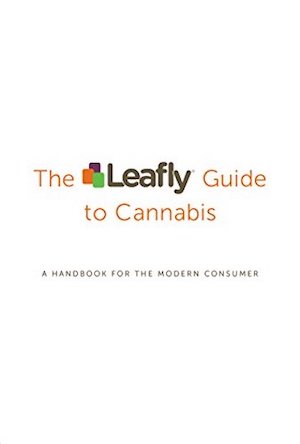The Leafly Guide to Cannabis: Best Book to learn Basics

About this book
The Leafy Guide to Cannabis provides all the best tips to navigating this growing market in a definitive guide that will enhance every user's enjoyment and high.
My thoughts
You can learn overall basics of cannabis.
I've read several books related cannabis, and this is the best book to learn everything. Well documented. But you can learn the same information from the Leafly's website, which is the author of this book.
My highlights
research has yet to show any patterns in their chemical profiles that would make one type uplifting and the other sedating. Not all sativas will energize you, and not all indicas will sedate you.
Running: Though commonly attributed to the release of endorphins, a “runner’s high” is actually linked to the human endocannabinoid system. So not only is running healthy for you, it also mimics the high you get from your favorite strain.
Terpenes are highly volatile, easily combustible compounds. To best preserve these tasty terpenes, consume cannabis with a vaporizer. Vaporizers heat cannabis at lower temperatures, so you get more THC, CBD, and terpenes without the smoke.
Recent research has demonstrated that secondhand exposure to cannabis smoke probably impairs cardiovascular function even more than secondhand tobacco smoke.
“There’s a great debate about whether bongs actually filter effectively,” said Kenji Hobbs, manager at Uncle Ike’s Pot Shop in Seattle. “Studies in California have shown bongs filter more water-soluble psychoactive cannabinoids than tar and polycarbons, which means the user has to smoke more weed to get an effective high, because the tar-to-cannabinoid ratio is now more skewed towards tar.”
They found that unfiltered joints actually outperformed the bong—by quite a lot. The bong, they reported, “produced 30 percent more tar per cannabinoids than the unfiltered joint.” The vaporizer—at the time, one of the earliest on the market—vastly outperformed them all, delivering far more cannabinoids per unit of tar.
here’s the interesting thing: The short, two-second puff every thirty seconds and every sixty seconds yielded about the same amount of THC, around 22 nanograms per milliliter (ng/ml). But the same puff every fifteen seconds doubled the THC intake, to 44 ng/ml. The conclusion: The average overall temperature of the joint remained higher when a toke was taken every fifteen seconds. That kept the whole THC decarboxylation and delivery system up and running. When the joint was allowed to rest for thirty or sixty seconds, it cooled. It’s the difference between keeping a machine running and or shutting it down and starting it back up again.
While detection times in excess of thirty days do occur for some, they are largely an exception. For example, a 1989 study of chronic users showed a maximum detection window of twenty-five days at a sensitivity of 20 ng/ml. Yet only one subject tested positive after fourteen days, and it took an average of just 9.8 days before cannabinoid levels were no longer detectible. And while a 1984 study testing chronic users at a cutoff of 50 ng/ ml showed a maximum of forty days to get clean, eight out of the ten subjects needed only thirteen days to show their first negative.
Chronic users at the standard 50 ng/ml cutoff: unlikely detection for longer than 10 days after last smoking session Chronic users at 20 ng/ml: unlikely detection for longer than 21 days after last smoking session First-time/occasional users at the standard 50 ng/ml cutoff: unlikely detection for longer than 3 to 4 days after last smoking session First time/occasional users at 20 ng/ml: unlikely detection for longer than 7 days after last smoking session
